Discover 11 hidden attractions, cool sights, and unusual things to do in Suzdal (Russia). Don't miss out on these must-see attractions: Suzdal Kremlin, Monastery of Saint Euthymius, and Kideksha Church. Also, be sure to include Cathedral of the Nativity of the Theotokos in your itinerary.
Below, you can find the list of the most amazing places you should visit in Suzdal (Vladimir).
Table of Contents
Suzdal Kremlin
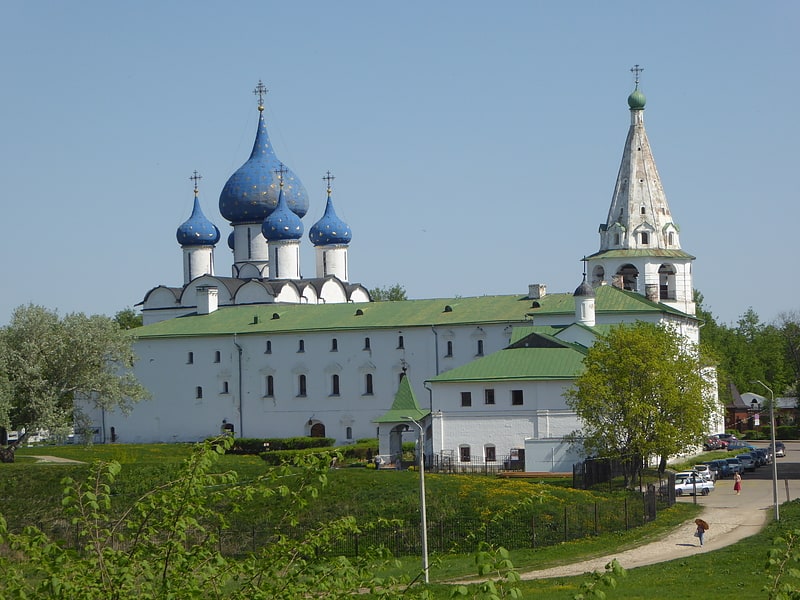
Also known as: Суздальский кремль
Striking white-stone medieval citadel. The Suzdal Kremlin is the oldest part of the Russian city of Suzdal, dating from the 10th century. Like other Russian Kremlins, it was originally a fortress or citadel and was the religious and administrative center of the city. It is most notably the site of the Cathedral of the Nativity.
Together with several structures in the neighboring city of Vladimir, it was named a UNESCO World Heritage Site in 1992.[1]
Address: Kremlovskaya Ulitsa, 27, 601293 Suzdal
Monastery of Saint Euthymius
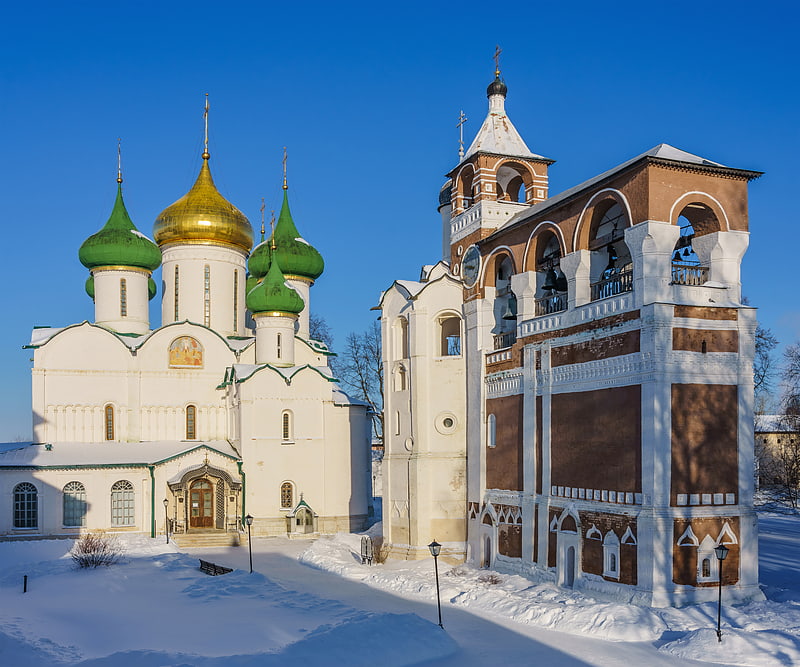
Also known as: Спасо-Евфимиев монастырь
Monastery in Suzdal, Russia. The Saviour Monastery of St. Euthymius is a monastery in Suzdal, Russia, founded in 1352.[2]
Address: Lenina St., 146, 601293 Suzdal
Kideksha Church
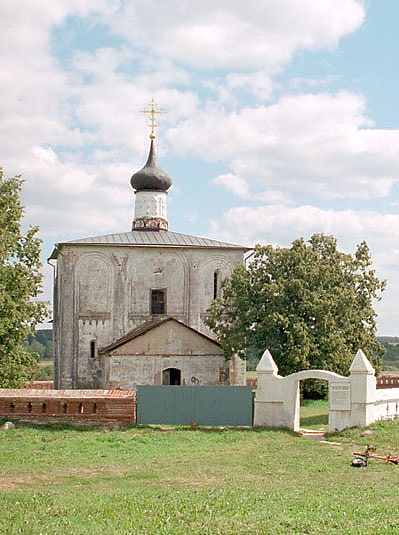
Also known as: Церковь Бориса и Глеба
Church in Kideksha, Russia. The Church of Boris and Gleb is a church built in 1152, on the orders of Prince Yuri Dolgoruky, in Kideksha on the Nerl River, "where the encampment of Saint Boris had been". It was probably part of the princely palace complex, but was only used by Dolgorukii for a few years before he left to become Grand Prince of Kiev in 1155. The village, four kilometers east of Suzdal, was an important town before it was destroyed by the Mongols and declined in stature.
The church, built in limestone probably by architects from Galicia, is a four-piered, three-apse church. It is one of the oldest in the district and one of the few churches built by Dolgorukii that is still extant. It retains fragments of frescoes dating back to the twelfth century. In the medieval period it was the site of a monastery and was then a parish church. The building has been significantly altered over the centuries. It lost its original vaulting and dome (the current roof and small dome date to the seventeenth century) and the apses are thought to be half their original height (their tops too were lost with the roof); a porch was added in the nineteenth century.
The church is a part of a UNESCO World Heritage Site "White Monuments of Vladimir and Suzdal" along with the seven other medieval monuments located in Vladimir and its surroundings (The Vladimir-Suzdal Museum-Preserve), and belongs to the monuments of the Golden Ring of Russia.
The church, along with other structures built around it in later centuries - namely the St. Stephen's Church and bell-tower) appears on a three-ruble silver commemorative coin struck by the St. Petersburg Mint in 2002.[3]
Address: Ulitsa Tsentral'naya, 63, 601293 Kideksha
Cathedral of the Nativity of the Theotokos
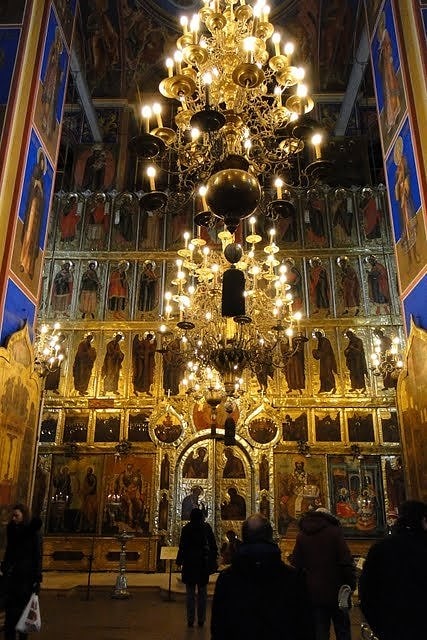
Also known as: Богородице-Рождественский собор
Orthodox church in Suzdal, Russia. The Cathedral of the Nativity of the Theotokos in Suzdal, Russia, is a World Heritage Site. It is one of the eight White Monuments of Vladimir and Suzdal and one of the most complex monuments of Russian medieval architecture. It was originally constructed during the reign of Vladimir II Monomakh in the late 11th century.
The Cathedral of the Nativity is surrounded by a ring of earthen walls in an oxbow of Kamenka River. It is notable for being the first city cathedral not built for the exclusive use of the knyaz or his relatives. The cathedral contains the remains of a son of Yuri Dolgoruki, knyazes of the Shuisky family and others.[4]
Pokrovskij zenskij monastyr
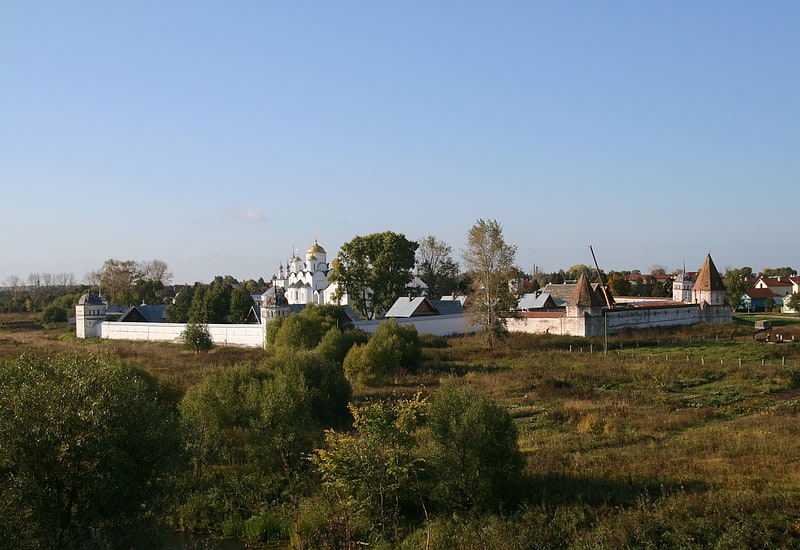
Monastery of the Care of the Mother of God - a female Orthodox monastery in the Suzdal, in the Włodzimierz Eparchy.
The monastery was founded in 1364. The first complex of monastery buildings was entirely built of wood; No elements survived. In the 16th century, the Grand Duke of Moscow Vasyl III gave the monastery significant cash gifts, which allowed the erection of his main council, the entrance gate with the Church of the Castor, the belfry, probably also a residential building and wall. The same ruler forced his wife Solomonida Saburowa to submit perpetual religious weddings, considering her a descendant unable to birth. Solomonida, as a nun Zofia, has just lived in the monastery of the care of the Mother of God in Suzdal. Among the women forced to live in this monastery, Ivan III, Eupraksia, wife of Vladimir Staricki, one of the wives of Ivan the Terrible Anna Wasilszczykowa, the second wife of Wasyl Szujski Maria and wife of Piotr and Eudoksja Łopuchin.
The main monastery temple is the Council of the Mother of God, built in the years 1510–1514, built on the site of an earlier wooden temple. Rebuilded many times, in 1962 he regained its appearance from the period immediately after completing the construction. From the northwestern side, a belfry raised in the 16th-18th centuries is adjacent to the building. The entrance to the monastery leads through the gate with the church of the Annunciation, formed in the period 1510–1518. The third monastery temple is the church-very of the conception of the Mother of God, erected after 1551 at the behest of Ivan the Terrible on the site of an older wooden sacred building. The complex of residential and farm buildings of the monastery was formed in the 17th and 18th centuries.
In the Soviet period, the Hotel "Pokrowskaja" was built in the monastery. It operated until 2008. The monastery itself was reactivated in 1992 and currently it is one of the female monastic communities of the Włodzimierz eparchy.
Address: Покровская ул., 76, 601293 Суздаль
Cerkov Nikolaa Cudotvorca iz Glotovo
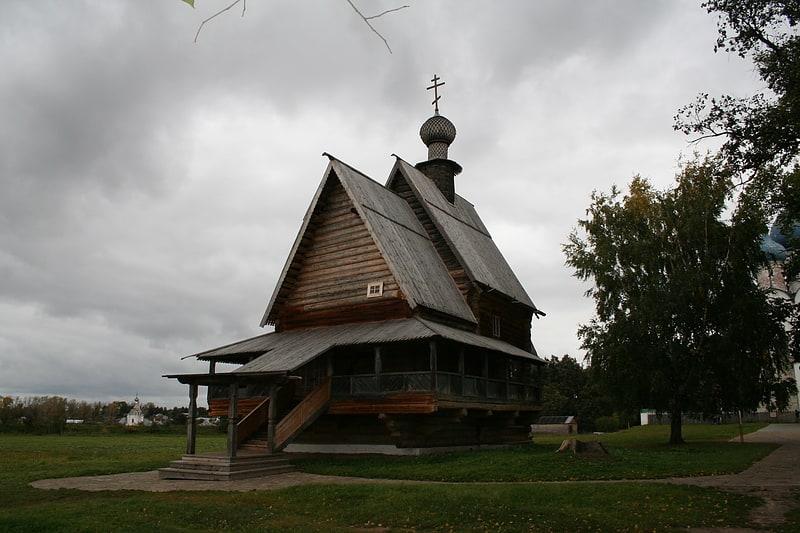
St. Nicholas Church from the village of Glotovo, moved to Suzdal - a monument of wooden architecture of the mid-18th century. It is an exhibit of the Suzdal Kremlin museum complex, which is under the operational control of the Vladimir-Suzdal Museum-Reserve.
There are other St. Nicholas Churches in Suzdal - one in the eastern part of the Kremlin, the second near the Pokrovsky Monastery, the third in the Spaso-Euthymius Monastery, and finally, the St. Nicholas Cross Church.
Aleksandrovskij monastyr
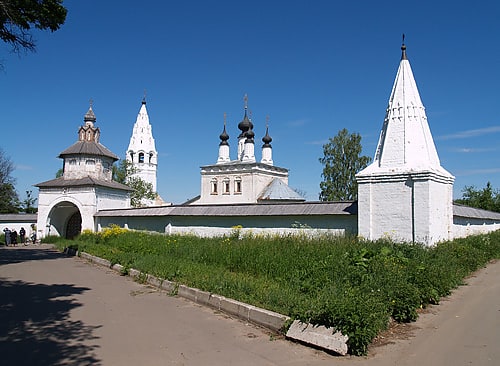
Monastery of St. Aleksander Nevsky - originally female, after reactivating the Men's Orthodox monastery in the Suzdal, belonging to the Włodzimierz Eparchy.
According to the application, the first monastic community in the place of today's monastery of St. Aleksandra was founded in 1240 by Aleksander Nevsky, who founded a wooden church for the needs of the community. In the following centuries, the monastery received earthly broadcasting from subsequent Moscow princes, and his position increased so much that he began to be described as a great bench. The monastery buildings from this period did not survive - in the footsteps of them are only two tombstones from 1362 and 1393, originally located in the burial places of the Sudal Princesses of Maria and Agripina.
In 1650, at the order of Bishop Sazdalski, Serapion was demolished by older monastery buildings and replaced with a completely new architecture. Natalia Naryszkina transferred the funds for the construction of the main church, founded in 1695 of the Lord's Ascension. The new team of monastery buildings was erected in a style typical of the seventeenth -century architecture of the Włodzimierz and Sudal region. The Church of the Ascension of the Lord is topped with five onion domes, with apse, decorated externally carefully carved frieze and windows, without painting decoration outside. The belfry of the church does not create one block with her, but is located in the vicinity of the temple. This is the only such building in the Suzdal that has no external decoration.
In the 18th century, the entire monastery buildings were surrounded by a low brick wall, in which testers imitating Russian defensive architecture were placed for decorative purposes. There was also a decorative entrance gate in the wall - this object together with a fragment of the adjacent wall is its only preserved element.
The monastery has been open again since 2005.
Address: Улица Гастева, Suzdal
Convent of Intercession
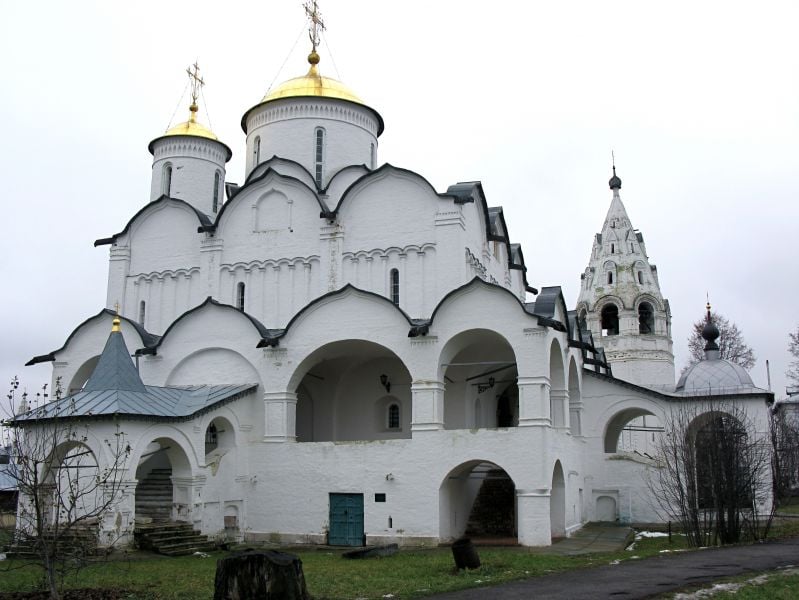
Specialty museum, Museum
Address: ul. Pokrovskaja, 76, 601293 Suzdal
Rizopolozhensky Monastery
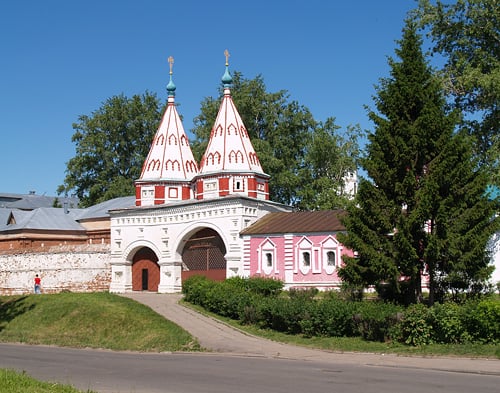
Address: Ulitsa Lenina (ул. Ленина), ~79, Suzdal
Cerkov Voskresenia Slovusego
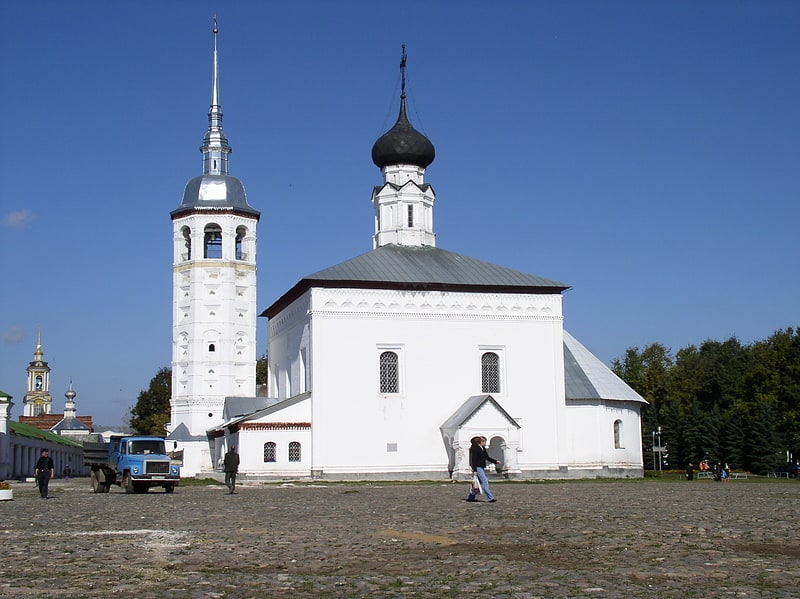
The church of the Lord's Resurrection - an Orthodox church in Suzdal.
The temple was erected in 1720 in a typical Eighteenth -century Land of Włodzimierz and the Sudal style. She replaced the previous church destroyed in 1719 by a fire. Due to the location at the main shopping square, Suzdala is referred to as "the church at the market".
The building is almost devoid of external decoration, except for the roof level of the hairstyle that surrounds it below. The whole is painted white, topped with a single onion dome. Absida adheres to the main cubic shape of the object. A belfry was erected in the immediate vicinity of the church; Initially, slight size, then expanded several times, with a helmet and tower-maglica. Unlike the temple, the belfry has an external decoration in the form of colorful tiles.
The church of the Kazan icon of the Mother of God is adjacent to the church of the Lord's Resurrection.
Cerkov Konstantina Cara

Church of saints Constantine and Helena - an Orthodox church in Suzdal.
The temple was erected in 1707 on site earlier, a wooden church under the same call, from funds transferred by the inhabitants of the district of the city in which it is located. The building is represented by a style typical of the eighteenth -century sacred buildings of the Land of Włodzimierz and the Sudalian Land: it is erected on a quadrangle plan with a rich external sculptural decoration (carved cornice, hinders imitating shooting, semi -columns). The whole is crowned with five domes of irregular shapes, erected on high drums. The extensive vestibule of the church was added to it in the nineteenth century.